Exploring radiofrequency
As radiofrequency fast becomes a staple on the salon menu, Rachael Glazier explores its evolution, and its growing capabilities
As little as five years ago radiofrequency was not a phrase you would hear with much regularity in the salon, unless you were talking about which music station to play in reception. Today, however, radiofrequency energy, or RF energy as it is also known, is an increasingly well-known tool in the fight against the signs of ageing, having evolved from the medical clinics into a more affordable, salon-friendly format.
Now a recognised favourite for skin tightening on face and body, radiofrequency energy is easiest to understand by looking at the electromagnetic spectrum as a whole. This spectrum includes electromagnetic waves such as infrared, visible light, ultraviolet – and also the electromagnetic wave with the lowest frequency of the lot, radio waves. The number of radio waves per second is known as radio frequency.
Simply, RF energy heats tissue. It has been used in medicine for more than 40 years, explains Dr Sam Hills, clinical and training manager at Lynton Lasers. Procedures include minimally invasive surgery as well as causing coagulation to stop bleeding during surgery.
“As the current passes into the skin it creates molecular vibration, which in turn creates heat,” says Hills. “This thermal energy can create controlled damage, leading to wound healing, resulting in increased production of collagen and elastin.”
Into the salon
This is why RF machines are an obvious contender for space in the modern beauty salon, and continue to increase in popularity: it’s an effective way to tighten up and smooth out skin, and can be used on both dark and light skin. “RF is now a proven technology with a strong safety record and clinical results-based evidence, so it is unsurprising that it has found a place in beauty salons,” says Guy Goudsmit, managing director of ABC Lasers.
Tissue in both the dermal and subcutaneous layers of the skin can be heated by RF energy. As well as increasing production of collagen and elastane, RF can also be used to contract collagen fibres, resulting in skin tightening. It is also used to improve lymphatic drainage, accelerate fat metabolism and for cellulite reduction.
Evolution of technology
The first machines were mono-polar and used one active pole on the face and a contact pad under the client’s hip, explains Angela Barbagelata-Fabes, chairman of distributor Carlton Beauty and Spa. The pole and the contact pad changed polarity, sending a current through the client’s body.
As RF machines have changed over the years bi-polar and multi-polar applicators have been developed, with bi-polar and mono-polar sometimes being used together in one machine. Mono results in a very concentrated energy being delivered to the skin (usually the subcutaneous layer), and so causes greater heat in the tissue and a greater thermal wound.
It is easy, however, to overheat the tissue and cause RF burns, reports Hills, which can be painful to the point of requiring an anaesthetic. Bi-polar uses two electrodes and tends to be used when targeting the dermis.
With bi-polar, the current flows between the two electrodes so no grounding pad is required. Multi-polar uses three or more electrodes and is good for heating the subcutaneous layer, and therefore is often used for cellulite and body contouring. “More poles on the skin allow for more changes of polarity, and therefore more heat, and a better end result,” explains Barbagelata-Fabes. “Because all of the contact points are in the same area, a very minimal amount of current is passed through the client’s body; the current will stay within the treatment area.”
Combination treatments
RF can be combined with most other types of treatment because it is non-invasive and has few contra-indications. A lifting face massage may enhance the RF treatment, while those using injectables can use RF to target those areas that injectables aren’t so good at correcting, such as lax skin on the jawline and neck.
Microcurrent or peels can be used with RF for complete anti-ageing and lifting treatments, and ultrasound cavitation is a good complementary body therapy.
The Motif system from Syneron-Candela combines IPL with RF for hair removal that can be used on any type of skin – the company also says the RF helps deliver a more effective result. Carlton Professional’s ThermaVisage RF8 combines RF with both vacuum (to boost the lymph and blood circulatory systems) and colour therapy (red LED is used to regenerate and energise while blue LED is used to calm sensitive skin).
There are no specific qualifications needed to use an RF machine although most companies require beauty therapists to hold at least an NVQ Level 2, and insurers may require certain qualifications, too. As Barbagelata-Fabes says: “With any machine it is vital that the therapist understands the theory behind the treatment so that they can apply it to their clients safely and effectively.”
(Main image: Marks & Spencer)
Systems on the market
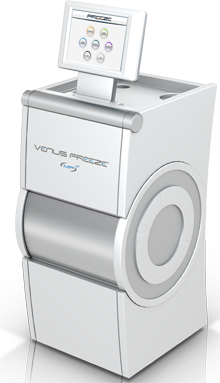 |
VENUS FREEZE
Point of difference: Combines magnetic pulses with multi-polar RF for cellulite and wrinkle reduction, body contouring, skin tightening and inch loss. |
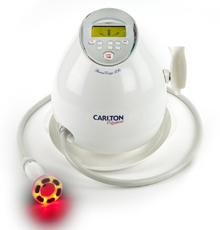 |
THERMAVISAGE RF8
Point of difference: Combines multi-polar RF with vacuum to help break down fat and cellulite, and also with colour therapy to calm and rejuvenate skin. |
 |
TWIN TREND
Point of difference: Delivers both mono-polar RF and bi-polar RF for improved circulation, body contouring, skin tightening and cellulite reduction. |
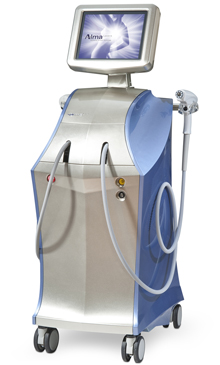 |
ACCENT ULTRA VSHAPE
Point of difference: Delivers hot and cold ultrasound and RF energy for optimal damage to fat cells without damaging surrounding tissue, nerves or vessels. |
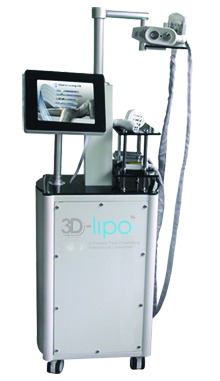 |
3D-LIPO
Point of difference: Uses RF in combination with cavitation, cryolipolysis and vacuum skin rolling to target fat, cellulite and skin tightening in one. |
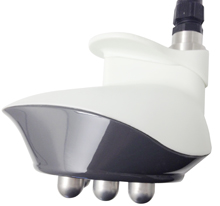 |
XCELL RF
Point of difference: Launched in February, this latest model from Chromogenex offers multi-polar capability, temperature sensor technology and an integrated power control safety feature. |
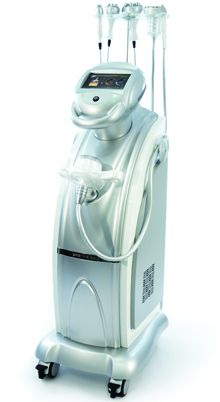 |
PROMAX LIPO
Point of difference: Offers bi-polar RF with vacuum, and ultrasonic cavitation, multi-polar RF and vacuum. Uses six different applicators to treat the entire body and face. |
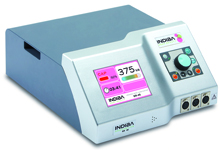 |
INDIBA DEEP BEAUTY ER45
Point of difference: The electrode is placed on the back of the therapist’s hand so that the energy flows through their fingers rather than through an electrode head. |
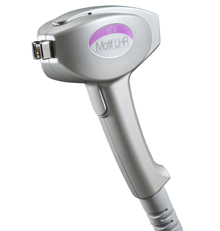 |
MOTIF
Point of difference: Combines IPL with RF for fast-acting hair removal on all skin types. Has a contact-cooling device for minimal discomfort. |

